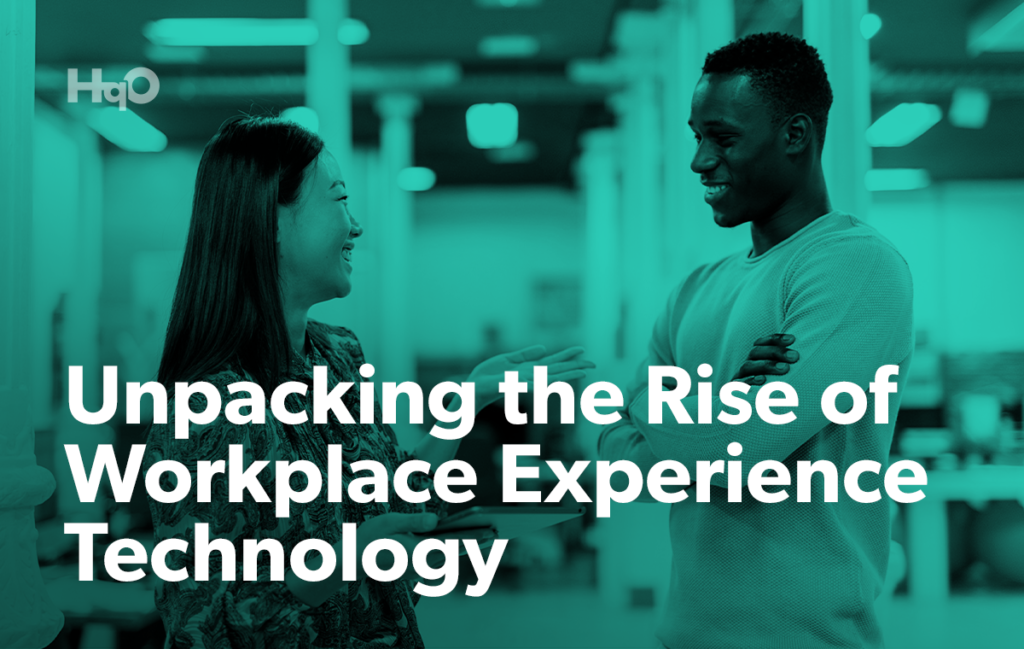In our 2021 Industry Outlook, The State of Tenant Experience, we discuss the rise of “phygital” or omnichannel experiences for the office — or the use of technology to bridge the divide between the physical and digital worlds in a unique and interactive way for the end-user. Though relatively new to the commercial real estate (CRE) sector, such experiences have already proven to revolutionize industries across the globe, particularly the retail industry. In fact, the growing popularity of personal technology use for consumers — and thus the majority of the workforce — has inspired companies to completely reinvent the way end-users interact with a given space through touchless technology.
One example of this is Amazon Go, a relatively young chain of convenience stores in the United States that have been open to the public since early 2018. Operated by e-commerce giant Amazon, the stores are disguised as typical brick-and-mortar locations, yet are actually partially automated; customers can enter buildings, walk through the aisles, and purchase products without ever requiring — or seeing — a cashier or self-checkout station.
In order to make the employee-less mirage work, Amazon Go relies on multiple technologies for its automations, including deep learning algorithms, advanced computer vision, and touchless sensing to accommodate the purchasing and checkout processes associated with any physical retail transaction. On the consumer side, everything is managed by the Amazon Go app, which is required to enter store locations through an in-app generated QR code and is linked directly to the individual shopper’s Amazon account.
Overall, the experience is frictionless and enjoyable — a lesson-learned that can be applied to CRE as landlords and property teams look to differentiate their office buildings while also enhancing health and safety protocols. These factors have shifted the value equation away from the buildings themselves to the people who occupy them. With the assistance of touchless technologies for offices, CRE leaders can seize an opportunity to adopt a consumer-first model and embrace the most recent digital disruptions. By blending the physical and digital workplaces, they can also create engaging and memorable experiences that bring them closer to their tenants than ever before.
Not yet convinced? Here’s why you should care more about touchless technology in the workplace.
A Rising Touchless Industry
CRE leaders around the world are taking a particular interest in touchless technology for offices, as the touchless industry itself experiences a massive boom. At the very beginning of the pandemic, the touchless sensing market was projected to reach USD 15.3 billion in 2025, from USD 6.8 billion in 2020 at a CAGR of 17.4%. Since the COVID-19 pandemic is still prominent in several countries across the globe, the need for touchless technology is more important than ever. Taking many nods from touchless technology in healthcare and other industries, touchless technology for offices is starting to gain traction due to its ability to address modern safety and hygienic needs.
Capgemini, a global leader in consulting, technology services, and digital transformation, recently conducted a survey of more than 4,800 customers and over 950 executives from 12 major economies to understand how organizations were readjusting their business models after the COVID-19 pandemic. They found several interesting things, including the fact that 62% of consumers expect to increase their use of touchless technologies once the pandemic subsides. Additionally, a McKinsey report shows that vendors who adopt the highest degree of touchless technology gain a competitive edge as they pose a lower risk to employees, consumers, and their overall operations — a transferable truth that can easily be applied to the office sector.
According to Proxyclick, “when paired with artificial intelligence, biometric technology, the Internet of Things (IoT), and cloud connectivity, touchless technology can become an integrated solution that enhances employee and visitor experience. It not only streamlines attendance and entry by prioritizing vital health and safety precautions but also ensures seamless customer service and enhances the effectiveness of administrative tools.”
It’s Undeniable: CRE Faces a Touchless Technology Future
Touchless technology products also contribute to the smart building trends that are already taking hold of the office sector. Ultimately, owners and property teams want to create environments where people feel safe, comfortable, and excited to come into work. Thus, the workplace needs to become as dynamic and adaptable as modern tenants’ needs. This indicates that not only does a building need to be smart to make the end-user journey as easy and seamless as possible, but it also needs to improve upon today’s health and safety regulations to adapt to heightened standards and expectations.
Here are just a few ideas — which touchless technology companies contribute to — that landlords can adopt to ensure their assets are keeping pace with modern trends:
- Implement mobile access technologies and touchless sensors to ensure that the end-user journey is quick, easy, and frictionless.
- Install lighting and temperature control features that can adapt to your tenants’ needs throughout the day.
- Increase your building’s cleaning and sanitation protocols.
- Partner with local retailers to provide easy, touchless access to healthy food options for your tenants.
- Leverage technology partners to offer both virtual and in-person fitness and wellness classes.
- Adopt more smart building software solutions and digital programming initiatives to foster a vibrant, tech-enabled workplace culture.
The more we engage with this new era of building innovation and the touchless sensing market, the more we can create the full, well-rounded experiences that generate value throughout an office portfolio. Companies that make touchless technology will play a key role in helping CRE leaders create office spaces where people look forward to working, especially as the market continues to adopt a customer-first approach.




